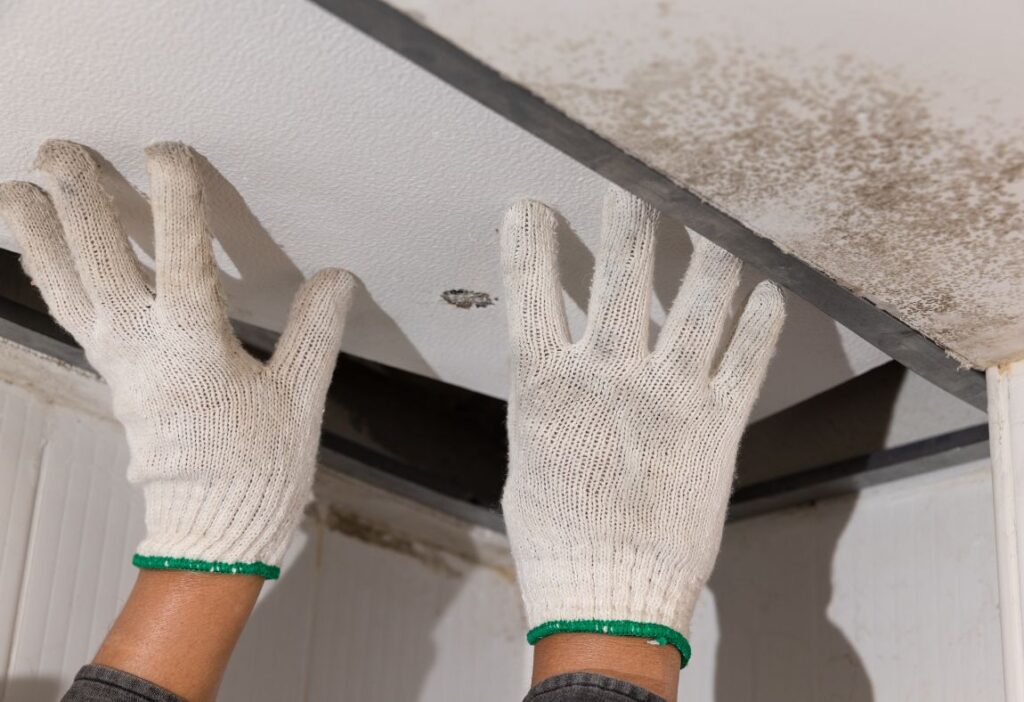Mold in an Attic: Causes, Consequences, and Cures
The attic might be a great storage space or even a spare room, but it also tends to be one of the most common places to find mold in an attic.
Understanding mold and how it grows is important because it can range from a mild annoyance to a serious issue in terms of safety and finances, depending on the type of mold and how far it has been allowed to progress.
Today, we’re going to go over the most common causes of mold in an attic, the consequences of letting it go, and how you can fix it.
Let’s get started!
What Causes Mold in an Attic?
Attic mold typically stems from one of three causes. All of which are based on moisture and warmth.
Leaking or Damaged Roof: Rainwater intrusion is a common culprit. Leaks in your roof shingles, flashing, or around vents can allow water to enter your warm attic, creating a breeding ground for mold. This mold thrives with each new rainfall, continuously supplied with moisture for growth.
Improper Ventilation: Even without a leak, moisture can build up in your attic. Attics need proper ventilation to allow warm, humid air to escape. If your attic ventilation is blocked or inadequate, moisture can become trapped, leading to condensation on cooler surfaces like roof sheathing and rafters. This condensation provides the perfect environment for mold growth.
HVAC System Issues: Your HVAC system can also contribute to attic moisture problems. If your air conditioning unit has an exhaust that vents directly into the attic, it can add significant moisture to the space. Similarly, improperly vented bathroom or kitchen exhaust fans can also vent warm, moist air into the attic, contributing to mold growth.
Finally, the insulation in your attic might be trapping natural moisture in the air and allowing it to settle on the flooring and walls.
Consequences of Leaving Mold in an Attic Untreated
The consequences for leaving mold untreated can vary dramatically depending on the type of mold growing, but it’s never a good situation.
The least of your worries is that you might have a mild reaction that includes sneezing, itching, or otherwise suffering from general allergy symptoms.
However, it can be much worse. If you have asthma or other respiratory issues, mold can lead to catastrophic consequences. Even if you’re perfectly healthy, some forms of mold can cause cancer or other serious illnesses.
Beyond a generally horrible health impact, mold in your home can slowly ruin the various structural components that keep it standing, and over time, the damage will get noticeably worse.
The moisture helping the mold grow isn’t just feeding the mold. It’s causing serious damage to your home’s integrity.
How to Fix Mold in an Attic Before it’s Too Late
The consequences of letting mold grow in your attic can be catastrophic. However, there are some things you can do to solve the problem.
First and foremost, if it’s an issue such as your roof leaking, you have to get that fixed. You can fix the mold, but if the roof isn’t patched, it’ll come back soon enough. Try to address the core issue as well as the mold itself.
If the issue is small, you can use at-home, eco-friendly mold solutions such as hydrogen peroxide or tea tree oil to kill the mold and stop it from spreading. Unfortunately, attic mold typically isn’t noticed until it’s far beyond that being an option.
Finally, you can hire the professionals at Mold Fix.
Mold isn’t always just on the surface. It can be on your walls and floorboards, as well. We can find the source of the mold, ensure it’s all properly removed, and identify any home fixes you might need to implement to keep it from coming back.
Call Mold Fix today to get the most reliable mold removal services!




